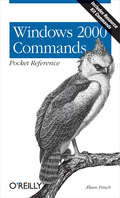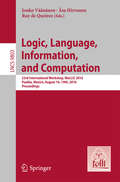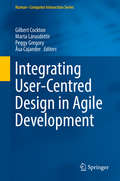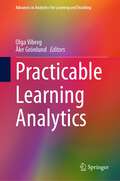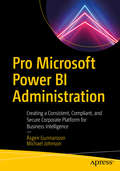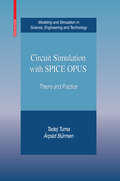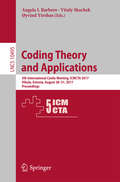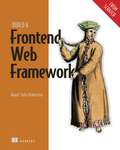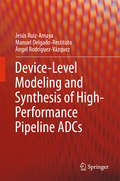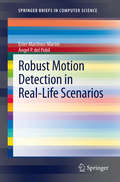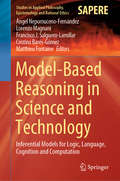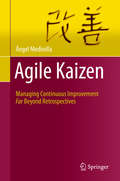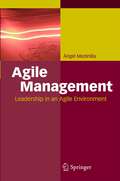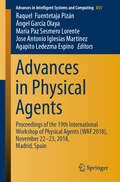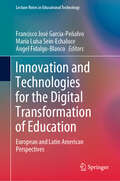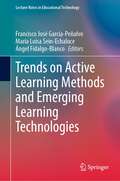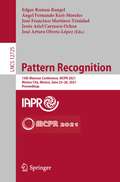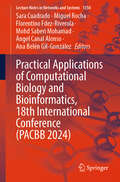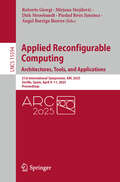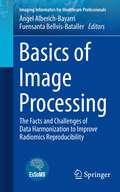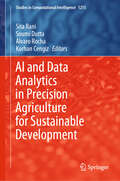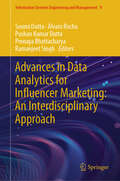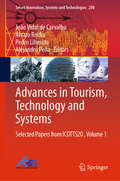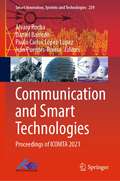- Table View
- List View
Windows 2000 Commands Pocket Reference
by Æleen FrischWindows administrators can accomplish many of their routine tasks much more quickly by using the command line (similar to the command line of DOS or Unix-based systems) than by going through the graphical user interface that most users associate with Windows. Windows 20000 Commands Pocket Reference documents the Windows command mode. It's designed for system administrators, but will also be valuable to many users. It includes most available Windows 2000 commands, as well as the most useful system administration command-line utilities from the Resource Kit. Weeded out of this book are Windows commands and command options that are obscure, obsolete, broken, unacceptably insecure, or frankly inadvisable, as well a few special-purpose classes of commands. Whenever several utilities perform essentially identical tasks, we include only the best of them. Commands are grouped according to their purpose and function; within a group, commands are arranged alphabetically. Options for each command are grouped by function and ordered by importance. The Windows 2000 Commands Pocket Reference complements Windows 2000 Administration in a Nutshell by conveying the kind of no-nonsense, boiled-down information typical of O'Reilly's highly successful companion Pocket Reference series. It's a valuable, concise reference to Windows 2000 commands and command-line utilities.
Logic, Language, Information, and Computation
by Jouko Väänänen Ruy De Queiroz Åsa HirvonenThis volume contains the papers presented at WoLLIC 2010: 17th Workshop on Logic, Language, Information and Computation held during July 6-9, 2010, on the campus of Universidade de Bras´ ?lia (UnB), Brazil. The Workshop on Logic, Language, Information and Computation (WoL- LIC) is an annual event, meeting every year since 1994, which aims at fostering interdisciplinary research in pure and applied logic. The idea is to have a forum which is large enough in the number of possible interactions between logic and the sciences related to information and computation, and yet is small enough to allow for concrete and useful interaction among participants. The present volume contains 13 contributed papers that were selected from among 32 submissions after a rigorous review by the Program Committee. Each submission was reviewed by at least two, and on average three, Program C- mittee members. This volume also containspapersor abstractsthat relateto the seven invited talks presented at the workshop. Between them, these papers give a snapshot of some fascinating work taking place at the frontiers between computation, logic, and linguistics. We are grateful to all the people who made this meeting possible and are responsible for its success: the members of the Program Committee and the external reviewers, the invited speakers, the contributors, and the people who were involved in organizing the workshop.
Integrating User-Centred Design in Agile Development
by Gilbert Cockton Marta Lárusdóttir Peggy Gregory Åsa CajanderThis book examines the possibilities of incorporating elements of user-centred design (UCD) such as user experience (UX) and usability with agile software development. It explores the difficulties and problems inherent in integrating these two practices despite their relative similarities, such as their emphasis on stakeholder collaboration. Developed from a workshop held at NordiCHI in 2014, this edited volume brings together researchers from across the software development, UCD and creative design fields to discuss the current state-of-the-art. Practical case studies of integrating UCD in Agile development across diverse contexts are presented, whilst the different futures for UCD and other design practices in the context of agile software development are identified and explored. Integrating User Centred Design in Agile Development will be ideal for researchers, designers and academics who are interested in software development, user-centred design, agile methodologies and related areas.
Practicable Learning Analytics (Advances in Analytics for Learning and Teaching)
by Olga Viberg Åke GrönlundThis book is about practicable learning analytics, that is able to become a successful part of practice, ultimately leading to improved learning and teaching. The aim of the book is to shift our perspective on learning analytics creation and implementation from that of “designing of” technology to that of “designing for” a system of practice. That is, any successful implementation of learning analytics requires a systematic approach, which the book explains through the lens of the Information Systems Artefact, constituting of the three interdependent artefacts: “technical”, “information” and “social”.The contributions of this book go beyond a consideration of particular humans such as teachers and students, and their individual activities to consider the larger systems of activity of which analytics become part of. The chapters included in this book present different cases of learning analytics implementation across countries, and the related opportunities and challenges related to generalizability of the results.The book is written for designers, students and educators of learning analytics who aim to improve learning and teaching through learning analytics.
Pro Microsoft Power BI Administration: Creating a Consistent, Compliant, and Secure Corporate Platform for Business Intelligence
by Michael Johnson Ásgeir GunnarssonManage Power BI within organizations. This book helps you systematize administration as Microsoft shifts Power BI from a self-service tool to an enterprise tool. You will learn best practices for many Power BI administrator tasks. And you will know how to manage artifacts such as reports, users, work spaces, apps, and gateways. The book also provides experience-based guidance on governance, licensing, and managing capacities. Good management includes policies and procedures that can be applied consistently and even automatically across a broad user base. This book provides a strategic road map for the creation and implementation of policies and procedures that support Power BI best practices in enterprises. Effective governance depends not only on good policies, but also on the active and timely monitoring of adherence to those policies. This book helps you evaluate the tools to automate and simplify the most common administrative and monitoring tasks, freeing up administrators to provide greater value to the organization through better user training and awareness initiatives. What You Will LearnRecognize the roles and responsibilities of the Power BI administratorManage users and their work spacesKnow when to consider using Power BI PremiumGovern your Power BI implementation and manage Power BI tenantsCreate an effective security strategy for Power BI in the enterpriseCollaborate and share consistent views of the data across all usersFollow a life cycle management strategy for rollout of dashboards and reportsCreate internal training resources backed up by accurate documentationMonitor Power BI to better understand risks and compliance manage costs, and track implementation Who This Book Is ForIT professionals tasked with maintaining their corporate Power BI environments, Power BI administrators and power users interested in rolling out Power BI more widely in their organizations, and IT governance professionals tasked with ensuring adherence to policies and regulations
Circuit Simulation with SPICE OPUS: Theory and Practice (Modeling and Simulation in Science, Engineering and Technology)
by Tadej Tuma Árpád BuermenThis book is a unique combination of a basic guide to general analog circuit simulation and a SPICE OPUS software manual, which may be used as a textbook or self-study reference. The book is divided into three parts: mathematical theory of circuit analysis, a crash course on SPICE OPUS, and a complete SPICE OPUS reference guide. All simulations as well as the free simulator software may be directly downloaded from the SPICE OPUS homepage: www.spiceopus.si. Circuit Simulation with SPICE OPUS is intended for a wide audience of undergraduate and graduate students, researchers, and practitioners in electrical and systems engineering, circuit design, and simulation development.
Coding Theory and Applications: 5th International Castle Meeting, ICMCTA 2017, Vihula, Estonia, August 28-31, 2017, Proceedings (Lecture Notes in Computer Science #10495)
by Ángela I. Barbero, Vitaly Skachek and Øyvind YtrehusThis book constitutes the refereed proceedings of the 5th International Castle Meeting on Coding Theory and Applications, ICMCTA 2017, held in Vihula, Estonia, in August 2017.The 24 full papers presented were carefully reviewed and selected for inclusion in this volume. The papers cover relevant research areas in modern coding theory, including codes and combinatorial structures, algebraic geometric codes, group codes, convolutional codes, network coding, other applications to communications, and applications of coding theory in cryptography.
Build a Frontend Web Framework (From Scratch)
by Ángel Sola OrbaicetaLearn how a frontend web framework works by coding your own!Web developers use frontend frameworks every day—but do you know how these essential parts of your stack really work? Build a Frontend Web Framework (From Scratch) reveals the inner workings of web frameworks by helping you create your very own. In Build a Frontend Web Framework (From Scratch), you&’ll learn the secrets behind frameworks like React, Vue, and Angular, including: Create HTML documents programmatically Define the view with virtual DOM Update the HTML efficiently with reconciliation algorithms Create two-way communication mechanisms between components in a hierarchy Whatever your experience level, you&’ll be able to start building your framework with this guide. All you need is some core skills in HTML, CSS, and JavaScript. And once you&’ve learned how frameworks function, you&’ll be able to work with them more efficiently, troubleshoot bugs more effectively, and even customize them for your specific needs! About the technology You use frontend frameworks every day, but do you really know what&’s going on behind the API? Building your own framework is a great way to learn how they interact with the DOM, generate page views, route data between components, and communicate with the underlying operating system. With this interesting and entertaining book, you&’ll build your own web framework step-by-step in JavaScript, ready to share with the world as an NPM package! About the book Build a Frontend Web Framework (From Scratch) guides you through a simple component-based frontend framework that borrows from React, Svelte, Angular, and other familiar tools. You&’ll learn how a modern framework operates by adding features like component state and lifecycle management, a virtual DOM, and reconciliation algorithms to update the HTML efficiently. You&’ll appreciate how each critical concept is broken down into easy-to-digest chunks and explained with engaging graphics. What's inside Create HTML documents programmatically Define the view with the virtual DOM Implement a component lifecycle scheduler About the reader For web developers familiar with JavaScript and Node. About the author Angel Sola Orbaiceta has worked in the software industry for over a decade, creating software for the cloud, macOS, and Windows desktop applications. Table of Contents PART 1 1 Are frontend frameworks magic to you? 2 Vanilla JavaScript—like in the old days PART 2 3 Rendering and the virtual DOM 4 Mounting and destroying the virtual DOM 5 State management and the application&’s lifecycle 6 Publishing and using your framework&’s first version 7 The reconciliation algorithm: Diffing virtual trees 8 The reconciliation algorithm: Patching the DOM PART 3 9 Stateful components 10 Component methods 11 Subcomponents: Communication via props and events 12 Keyed lists 13 The component lifecycle hooks and the scheduler 14 Testing asynchronous components Appendix
Device-Level Modeling and Synthesis of High-Performance Pipeline ADCs
by Jesús Ruiz-Amaya Ángel Rodríguez-Vázquez Manuel Delgado-RestitutoThis book presents models and procedures to design pipeline analog-to-digital converters, compensating for device inaccuracies, so that high-performance specs can be met within short design cycles. These models are capable of capturing and predicting the behavior of pipeline data converters within less than half-a-bit deviation, versus transistor-level simulations. As a result, far fewer model iterations are required across the design cycle. Models described in this book accurately predict transient behaviors, which are key to the performance of discrete-time systems and hence to the performance of pipeline data converters.
Robust Motion Detection in Real-Life Scenarios
by Ángel P. Pobil Ester Martínez-MartínThis work proposes a complete sensor-independent visual system that provides robust target motion detection. First, the way sensors obtain images, in terms of resolution distribution and pixel neighbourhood, is studied. This allows a spatial analysis of motion to be carried out. Then, a novel background maintenance approach for robust target motion detection is implemented. Two different situations are considered: a fixed camera observing a constant background where objects are moving; and a still camera observing objects in movement within a dynamic background. This distinction lies on developing a surveillance mechanism without the constraint of observing a scene free of foreground elements for several seconds when a reliable initial background model is obtained, as that situation cannot be guaranteed when a robotic system works in an unknown environment. Other problems are also addressed to successfully deal with changes in illumination, and the distinction between foreground and background elements.
Model-Based Reasoning in Science and Technology: Inferential Models for Logic, Language, Cognition and Computation (Studies in Applied Philosophy, Epistemology and Rational Ethics #49)
by Lorenzo Magnani Ángel Nepomuceno-Fernández Francisco J. Salguero-Lamillar Cristina Barés-Gómez Matthieu FontaineThis book discusses how scientific and other types of cognition make use of models, abduction, and explanatory reasoning in order to produce important and innovative changes in theories and concepts. Gathering revised contributions presented at the international conference on Model-Based Reasoning (MBR18), held on October 24–26 2018 in Seville, Spain, the book is divided into three main parts. The first focuses on models, reasoning, and representation. It highlights key theoretical concepts from an applied perspective, and addresses issues concerning information visualization, experimental methods, and design. The second part goes a step further, examining abduction, problem solving, and reasoning. The respective papers assess different types of reasoning, and discuss various concepts of inference and creativity and their relationship with experimental data. In turn, the third part reports on a number of epistemological and technological issues. By analyzing possible contradictions in modern research and describing representative case studies, this part is intended to foster new discussions and stimulate new ideas. All in all, the book provides researchers and graduate students in the fields of applied philosophy, epistemology, cognitive science, and artificial intelligence alike with an authoritative snapshot of the latest theories and applications of model-based reasoning.
Agile Kaizen: Managing Continuous Improvement Far Beyond Retrospectives
by Ángel MedinillaAgile teams have been struggling with the concept of continuous improvement since the first Agile frameworks were developed, and still very little has been written about the practice of continuous improvement in Agile environments. Although team retrospectives have been prescribed and some practices have been introduced in order to implement and facilitate them, the truth is that most Agile teams are conducting dull retrospectives that end with a list of things that have been done wrong, just to repeat the same list two weeks later at the next meeting. Instead of listing hundreds of Japanese-labeled tools, this book gives you practical insights into how to spot improvement opportunities, how to plan for improvement and how to engage everyone in your company in the Kaizen process. In addition, it will also provide you with 27 proven practices and 12 bonus activities to introduce into your retrospectives in order to keep them fresh, creative and exciting, so you can promise a team that, in a year's time, no two retrospectives will be alike. This book helps you as a manager, team leader, change agent or consultant in any type of organization to unleash the real power of Kaizen cultures - no matter what kind of organization, market, product, technology, vision, goal or size. It provides you with the background, tools and practical hints on how to engage your organization in a process of continuous quest for new and better ways of performing.
Agile Management: Leadership in an Agile Environment
by Ángel MedinillaIf you have tried to implement Agile in your organization, you have probably learned a lot about development practices, teamwork, processes and tools, but too little about how to manage such an organization. Yet managerial support is often the biggest impediment to successfully adopting Agile, and limiting your Agile efforts to those of the development teams while doing the same old-style management will dramatically limit the ability of your organization to reach the next Agile level. Ángel Medinilla will provide you with a comprehensive understanding of what Agile means to an organization and the manager's role in such an environment, i.e., how to manage, lead and motivate self-organizing teams and how to create an Agile corporate culture. Based on his background as a "veteran" Agile consultant for companies of all sizes, he delivers insights and experiences, points out possible pitfalls, presents practical approaches and possible scenarios, also including detailed suggestions for further reading. If you are a manager, team leader, evangelist, change agent (or whatever nice title) and if you want to push Agile further in your organization, then this is your book. You will read how to change the paradigm of what management is about: it is not about arbitrary decisions, constant supervision and progress control, and the negotiation of changing requirements. It is about motivation, self-organization, responsibility, and the exploitation of all project stakeholders' knowledge. We live in a different world than the one that most management experts of the 20th century describe, and companies that strive for success and excellence will need a new kind of manager - Agile managers.
Roblox la Guía no Oficial
by The Yuw Ángel Martínez Terré* GUÍA NO OFICIAL * Trucos avanzados y guía de estrategia. Esta es la guía más exhaustiva y detallada que encontrarás online. Disponible en descarga instantánea en tu teléfono móvil, eBook o en forma física. Dado el éxito de mis otros cientos de guías he escrito otra para usuarios más avanzados. Entra en detalle sobre las estrategias a seeguir para vencer a tu oponente, progresar en el juego, obtener más monedas y mucho más. -Consejos y estrategias profesionales. -Trucos. -Secretos, consejos, trampas, desbloqueables y otros ardides usados por los jugadores profesionales. -Cómo obtener un montón de dinero. -Y MUCHO MÁS Todas las versiones de esta guía cuentan con capturas de pantalla para ayudarte a entender mejor el juego. No hay otra guía mejor y más avanzada que esta. Advertencia: Este producto no está asociado, afiliado, apoyado, certificado o respaldado por el autor Original.
Advances in Physical Agents: Proceedings of the 19th International Workshop of Physical Agents (WAF 2018), November 22-23, 2018, Madrid, Spain (Advances in Intelligent Systems and Computing #855)
by Raquel Fuentetaja Pizán Ángel García Olaya Maria Paz Sesmero Lorente Jose Antonio Iglesias Martínez Agapito Ledezma EspinoThe book reports on cutting-edge theories and methods aimed at the control and coordination of agents acting and moving in a dynamic environment. It covers a wide range of systems, including multiagent systems, domotic agents, robotic manipulators, soccer robots, autonomous and semiautonomous robots, as well as systems for industrial applications. Advances in software agents, sensors, computer visions and other related areas are also thoroughly discussed and presented in detail. Based on the 19th edition of the International Workshop of Physical Agents (WAF 2018), held on November 22-23, 2018, in Madrid, Spain, this book offers a snapshot of the state-of-the-art in the field of physical agents, with a special emphasis on autonomous systems such as mobile robots, industrial process or other complex systems.
Innovation and Technologies for the Digital Transformation of Education: European and Latin American Perspectives (Lecture Notes in Educational Technology)
by Francisco José García-Peñalvo María Luisa Sein-Echaluce Ángel Fidalgo-BlancoThis book provides a critical overview of the current use of learning technologies for educational innovation and examines global trends in educational innovation. It also shares experiences in educational innovation with learning technologies in Europe and Latin America. Despite increasing concerns about the use of technology in education, this book discusses how these can be addressed by focusing on fundamental principles such as personalization, collaboration, engagement, accessibility, and professional development.
Trends on Active Learning Methods and Emerging Learning Technologies (Lecture Notes in Educational Technology)
by Francisco José García-Peñalvo María Luisa Sein-Echaluce Ángel Fidalgo-BlancoThis book uncovers the crucial issues in learning technologies in this digital transformation moment, specifically within the COVID-19 umbrella effects. Remote learning, educational technologies, or distance learning are usually used topics by teachers, students, and researchers because the educational context should be transformed and even reinvented itself drastically. Technologies have been used more intensively in the last year than during the last decade. However, what is the effect of these "new" technologies on the teaching and learning methodologies? Are teachers and students fully digital competent to integrate these technologies in their teaching and learning activities? In this book, the authors claim to go forward that the online teaching conception to replicate the face-to-face teaching through a camera. They propose adapting the active methodologies to the online or hybrid context, which is a challenge that must be corroborated with rigorous educational research.
Pattern Recognition: 13th Mexican Conference, MCPR 2021, Mexico City, Mexico, June 23–26, 2021, Proceedings (Lecture Notes in Computer Science #12725)
by Jesús Ariel Carrasco-Ochoa José Francisco Martínez-Trinidad José Arturo Olvera-López Edgar Roman-Rangel Ángel Fernando Kuri-MoralesThis book constitutes the proceedings of the 13th Mexican Conference on Pattern Recognition, MCPR 2021, which was planned to be held in Mexico City, Mexico, in June 2021. The conference was instead held virtually. The 35 papers presented in this volume were carefully reviewed and selected from 75 submissions. They are organized in the following topical sections: artificial intelligence techniques and recognition; pattern recognition techniques; neural networks and deep learning; computer vision; image processing and analysis; and medical applications of pattern recognition.
Practical Applications of Computational Biology and Bioinformatics, 18th International Conference (Lecture Notes in Networks and Systems #1350)
by Florentino Fdez-Riverola Mohd Saberi Mohamad Miguel Rocha Sara Cuadrado Ana Belén Gil-González Ángel Canal AlonsoThis book aims to promote the interaction among the scientific community to discuss applications of CS/AI with an interdisciplinary character, exploring the interactions between sub-areas of CS/AI, Bioinformatics, Chemoinformatics and Systems Biology. The success of Bioinformatics in recent years has been prompted by research in Molecular Biology and Molecular Medicine in several initiatives. This year’s technical program presents both high quality and diversity, with contributions in well-established and evolving areas of research. The PACBB’24 technical program has selected 22 full papers in the main track and, as in past editions, it will be special issues in ranked journals. This symposium is organized by the BISITE Research Group of the University of Salamanca (Spain). The author would like to thank all the contributing authors, the members of the Program Committee, National Associations (AEPIA, APPIA), and the sponsors (AIR Institute).
Applied Reconfigurable Computing. Architectures, Tools, and Applications: 21st International Symposium, ARC 2025, Seville, Spain, April 9–11, 2025, Proceedings (Lecture Notes in Computer Science #15594)
by Roberto Giorgi Dirk Stroobandt Piedad Brox Jiménez Mirjana Stojilović Ángel Barriga BarrosThis book constitutes the proceedings of the 21st International Symposium on Applied Reconfigurable Computing. Architectures, Tools, and Applications, ARC 2025, held in Seville, Spain, during April 9–11, 2025. The 12 full papers presented in this book together with 1 short paper from the technical program were carefully reviewed and selected from 40 submissions.ARC 2025 covers a wide range of topics, including hardware acceleration, security and fault tolerance, energy-efficient architectures, and emerging applications in artificial intelligence and high-performance computing. The symposium fostered collaboration and pushed the boundaries of state-of-the-art research.
Basics of Image Processing: The Facts and Challenges of Data Harmonization to Improve Radiomics Reproducibility (Imaging Informatics for Healthcare Professionals)
by Ángel Alberich-Bayarri Fuensanta Bellvís-BatallerThis book, endorsed by EuSoMII, provides clinicians, researchers and scientists a useful handbook to navigate the intricate landscape of data harmonization, as we embark on a journey to improve the reproducibility, robustness and generalizability of multi-centric real-world data radiomic studies. In these pages, the authors delve into the foundational principles of radiomics and its far-reaching implications for precision medicine. They describe the different methodologies used in extracting quantitative features from medical images, the building blocks that enable the transformation of images into actionable predictions. This book sweeps from understanding the basis of harmonization to the implementation of all the knowledge acquired to date, with the aim of conveying the importance of harmonizing medical data and providing a useful guidance to enable its applicability and the future use of advanced radiomics-based models in routine clinical practice. As authors embark on this exploration of data harmonization in radiomics, they hope to ignite discussions, foster new ideas, and inspire researchers, clinicians, and scientists alike to embrace the challenges and opportunities that lie ahead. Together, they elevate radiomics as a reproducible technology and establish it as an indispensable and actionable tool in the quest for improved cancer diagnosis and treatment.
AI and Data Analytics in Precision Agriculture for Sustainable Development (Studies in Computational Intelligence #1215)
by Álvaro Rocha Soumi Dutta Korhan Cengiz Sita RaniThis book offers a comprehensive analysis of artificial intelligence (AI) and data analytics in precision agriculture. The integration of technology in agriculture is revolutionizing traditional farming practices, paving the way for sustainability. Precision farming, powered by AI, IoT, and big data, optimizes resource use by enabling real-time monitoring of soil health, weather conditions, and crop growth. Automated irrigation systems and drones reduce water wastage and enhance productivity. Biotechnology advances, such as genetically modified crops and CRISPR gene editing, improve yield, pest resistance, and climate adaptability. Vertical farming and hydroponics offer space-efficient solutions, minimizing land degradation and water consumption. Robotics and autonomous machinery streamline labor-intensive tasks, reducing reliance on chemical inputs. Blockchain ensures transparency in the food supply chain, promoting fair trade and reducing food fraud. Renewable energy sources, like solar-powered farms, further lower agriculture&’s carbon footprint. By adopting these innovations, farmers can produce more with fewer resources, ensuring food security while preserving the environment. Embracing technology-driven agriculture is crucial for meeting global food demands sustainably, combating climate change, and fostering economic resilience in farming communities. The future of agriculture lies in intelligent, data-driven, and eco-friendly solutions that balance productivity with environmental stewardship.
Advances in Data Analytics for Influencer Marketing: An Interdisciplinary Approach (Information Systems Engineering and Management #9)
by Álvaro Rocha Soumi Dutta Pronaya Bhattacharya Pushan Kumar Dutta Ramanjeet SinghIn the ever-evolving landscape of digital marketing, influencer marketing has emerged as a game-changer, captivating audiences and driving brand engagement like never before. However, success in this dynamic field requires more than just intuition—it demands a mastery of data analytics and an interdisciplinary approach. Introducing this groundbreaking book equips marketers, analysts, and business leaders with the tools and strategies to navigate the complexities of influencer marketing with precision and confidence. Written by leading experts in the field, this comprehensive book explores the intersection of data analytics, consumer behavior, and influencer marketing, offering a holistic perspective on this powerful marketing technique. This book equips the readers with the knowledge and tools to stay ahead of the curve and drive unparalleled success in the ever-evolving world of influencer marketing.
Advances in Tourism, Technology and Systems: Selected Papers from ICOTTS20 , Volume 1 (Smart Innovation, Systems and Technologies #208)
by Álvaro Rocha Pedro Liberato João Vidal de Carvalho Alejandro PeñaThis book features a collection of high-quality research papers presented at the International Conference on Tourism, Technology & Systems (ICOTTS 2020), held at the University of Cartagena, in Cartagena de Indias, Colombia, from 29th to 31st October 2020. The book is divided into two volumes, and it covers the areas of technology in tourism and the tourist experience, generations and technology in tourism, digital marketing applied to tourism and travel, mobile technologies applied to sustainable tourism, information technologies in tourism, digital transformation of tourism business, e-tourism and tourism 2.0, big data and management for travel and tourism, geotagging and tourist mobility, smart destinations, robotics in tourism, and information systems and technologies.
Communication and Smart Technologies: Proceedings of ICOMTA 2021 (Smart Innovation, Systems and Technologies #259)
by Álvaro Rocha Paulo Carlos López-López Daniel Barredo Iván Puentes-RiveraThis book features selected papers from the International Conference on Communication and Applied Technologies (ICOMTA 2021), jointly organized by Universidad del Rosario (Bogotá, Colombia); the University of Vigo (Galicia, Spain); the University of Santiago de Compostela-Equipo de Investigaciones Políticas (Galicia, Spain); the University of A Coruña (Galicia, Spain); and the Information and Technology Management Association (ITMA), during September 2021. It covers recent advances in the field of digital communication and processes digital social media, software, big data, data mining, and intelligent systems.
